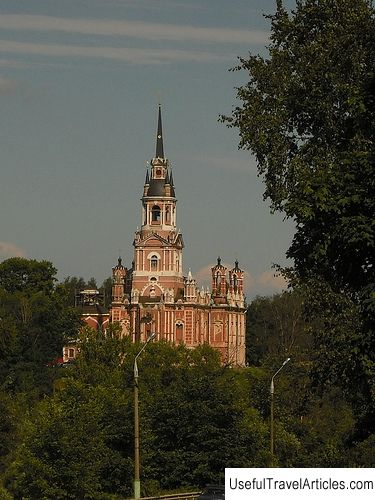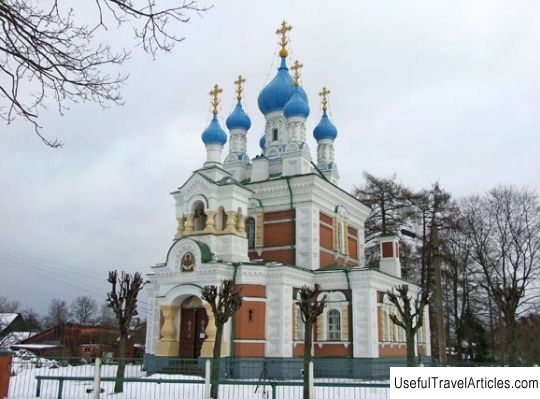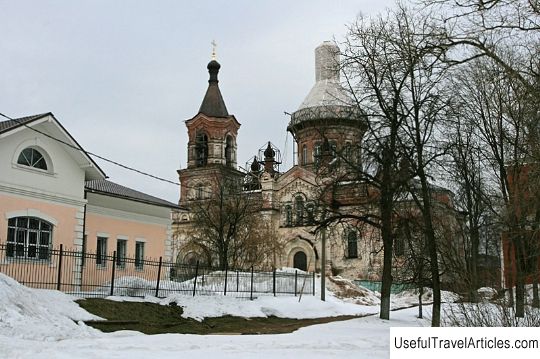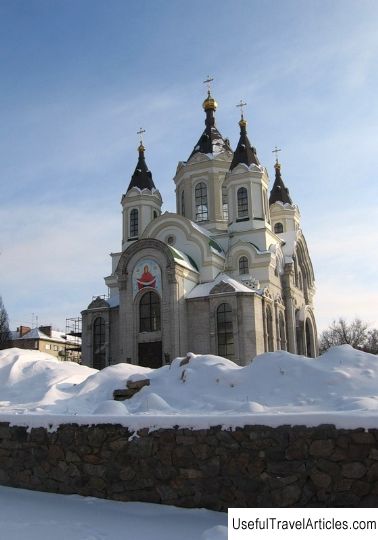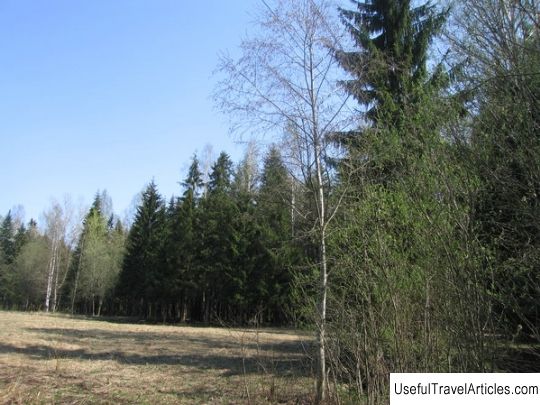Pokrovsky Cathedral description and photos - Russia - Leningrad region: Gatchina
Rating: 9,4/10 (1930 votes) 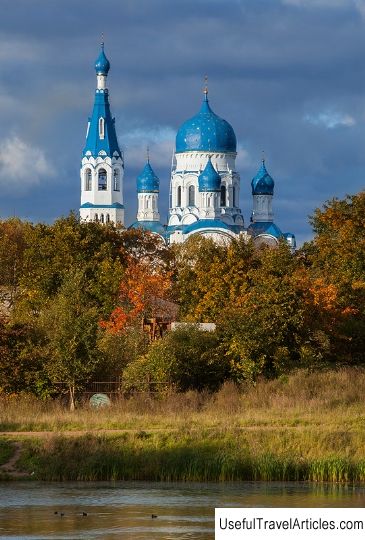
Pokrovsky Cathedral description and photos - Russia - Leningrad region: Gatchina. Detailed information about the attraction. Description, photos and a map showing the nearest significant objects. Photo and descriptionThe Intercession Cathedral is an Orthodox church located in Gatchina. The history of this church began when the merchant Karpov once won a large sum of money in the lottery. Wishing to beg for the recovery of his wife, the merchant decided to invest the money he accidentally received in a charitable cause. Karpov turned to John of Kronstadt for advice, and he blessed the construction of the church of the Pyatogorsk women's monastery's courtyard, which was located next to Karpov's estate. First, Karpov provided a wooden house at the corner of Mariinskaya and Hospitalnaya streets for the monastery courtyard. On July 24, 1896, the foundation of a temporary church was made in this house, and on August 6, Bishop Nazariy Kirillov of Gdov, consecrated the main altar in it in honor of the Protection of the Most Holy Theotokos. In 1915 in connection with the consecration of the stone courtyard church, the temporary church was abolished. The chief architect of Gatchina Leonid Mikhailovich Kharlamov and AA Baryshnikov, an architect and engineer, were involved in the development of the project of the stone church. When developing the project of the church, Kharlamov took the traditional scheme of the 17th-century churches of Moscow Russia as a model. with a slender hipped bell tower and an indispensable five-domed. To oversee the construction of the temple, a commission was created, which included church ministers, contractors, the former chief architect of the city N.V. Dmitriev, architect E.P. Vargin. Karpov's capital was about half of the funds spent on the construction of the church. Donations to the temple came not only in money, but also in the necessary building materials. A land plot adjacent to the estate of the merchant Karpov was donated to the church. Construction work began in the summer of 1905. The ceremony of laying the foundation stone of the temple took place on June 3, 1907, when the basement floor was erected. The church took 10 years to build. The result is a majestic structure, barely inferior in height to the Pavlovsk Cathedral. The size of the temple is emphasized by the adjacent one-story buildings. A massive central dome rises among four miniature onions on deaf drums. The main motive of the external appearance of the temple is large arched windows and arched walls repeating their shape. The northern part of the church, overlooking the marketplace, was to be decorated with a stained glass window depicting the walking Savior. The slender tent of the bell tower rose up above the entrance to the temple. Due to the outbreak of the First World War, it was not possible to plaster the brick walls. The belfry and drums of the domes also remained unplastered. They differ in color because they are made of reinforced concrete. It was supposed to plaster the inner walls as well, and then paint them in several tones, pulling scarves, frames and panels. In the niches, it was supposed to insert 32 pictorial images, the dome should also be painted, and images of four evangelists should be viewed from the sails. Most of the finishing work was carried out by the sisters of the Intercession Monastery of the Mother of God, incl. gilding of crosses, oak iconostases, and other church accessories. The solemn consecration of the main side-altar of the church - in the name of the Intercession of the Mother of God - took place on October 8, 1914 by Gennady (Tuberozov), Bishop of Narva. On October 9, 1914, the southern aisle of Alexander Nevsky was consecrated, and the north - in the name of Nicholas the Wonderworker - December 7, 1914 The facade of the Intercession Cathedral remained unplastered until 2011. According to archival data, in the fall of 1918, a side-altar in the name of John the Baptist and Martyr Lydia was consecrated in the basement of the church ... The rector of the church from 1911 until his arrest in 1938 was the priest Sevastian Nikolaevich Voskresensky, later ranked among the holy martyrs by the church. In 1939, the Intercession Church was closed by decree Of the Presidium of the Leningrad Oblast Executive Committee, and its premises were transferred to the warehouses of "Gatchintorg". The temple was returned to the Orthodox community in 1990, and in 1991. the first service was held here. In 1996, the lower church in honor of St. John of Kronstadt. The Intercession Cathedral is the largest church in the name of the Mother of God in the Leningrad Region.      We also recommend reading Museum of Contemporary Art and Design (Museo de Arte y Diseno Contemporaneo) description and photos - Costa Rica: San Jose Topic: Pokrovsky Cathedral description and photos - Russia - Leningrad region: Gatchina. |
